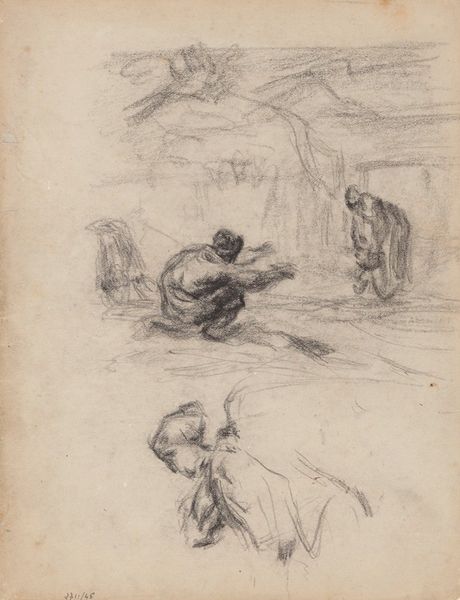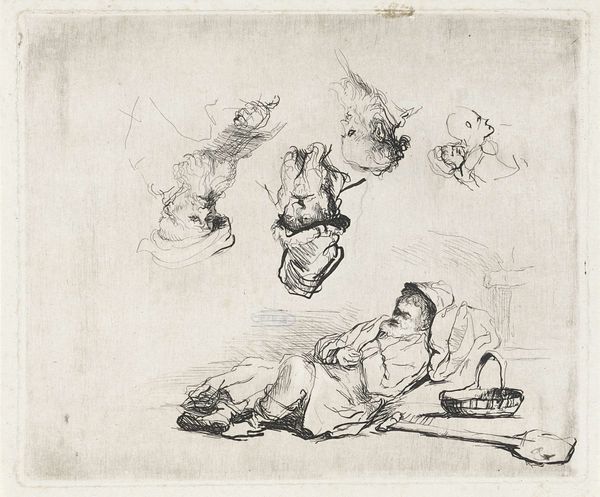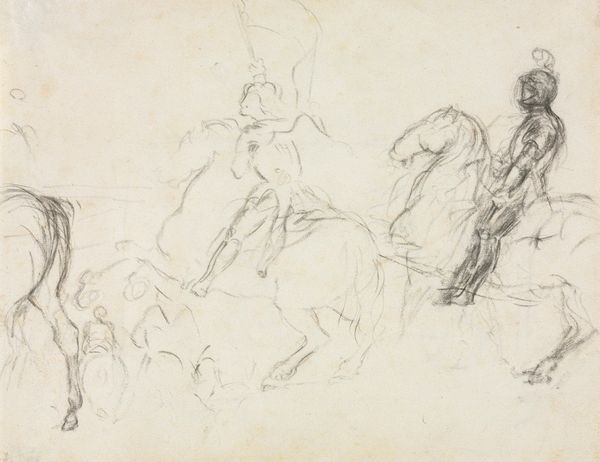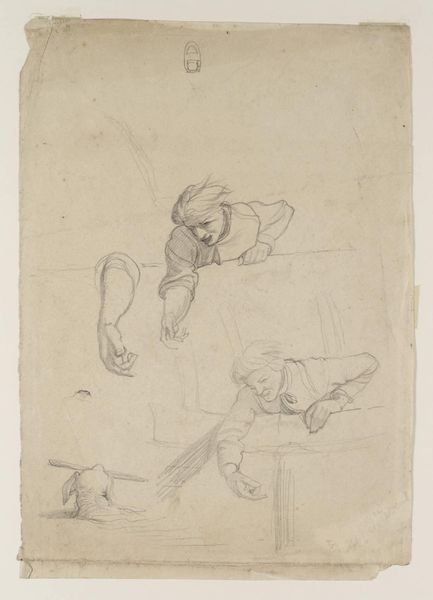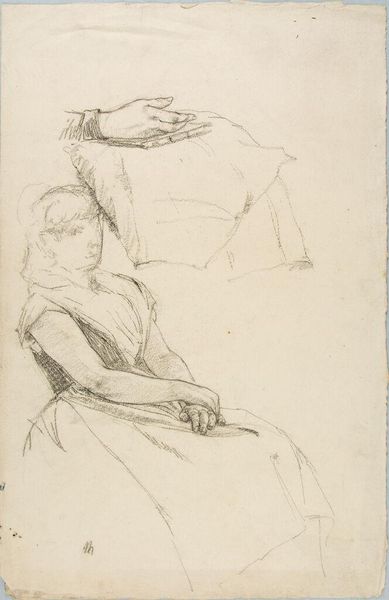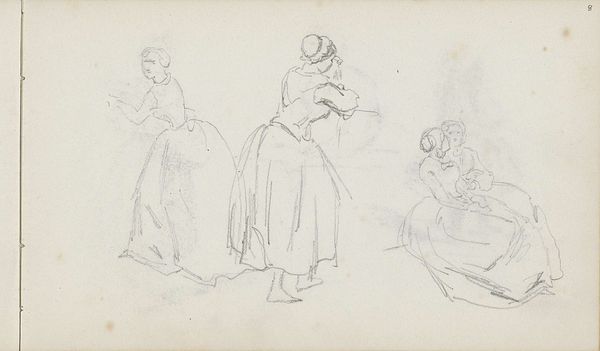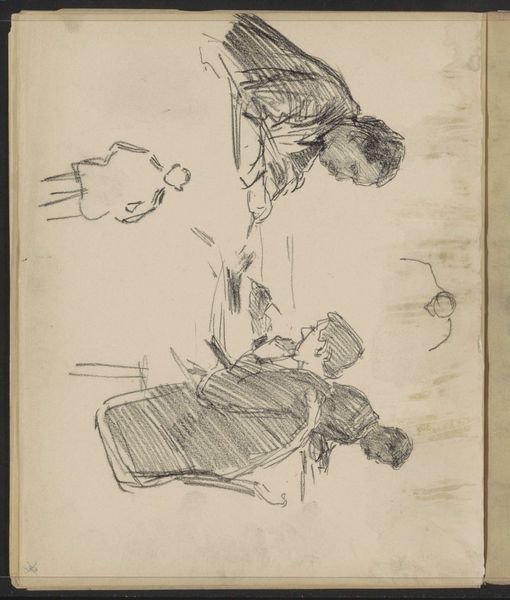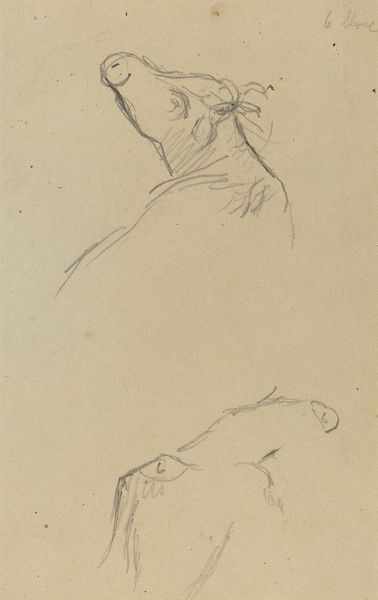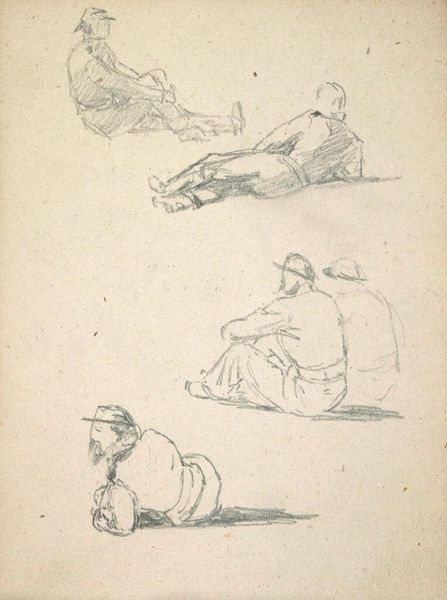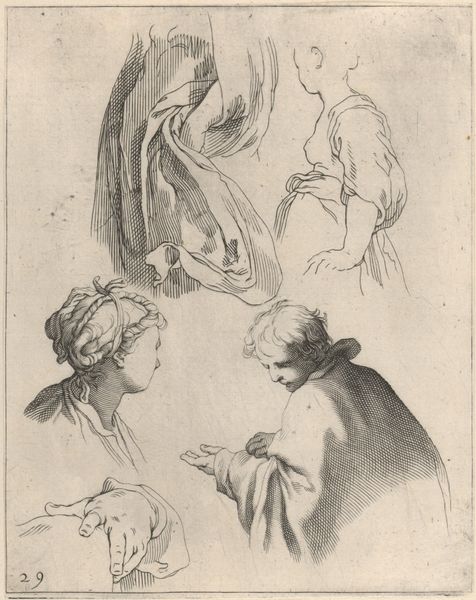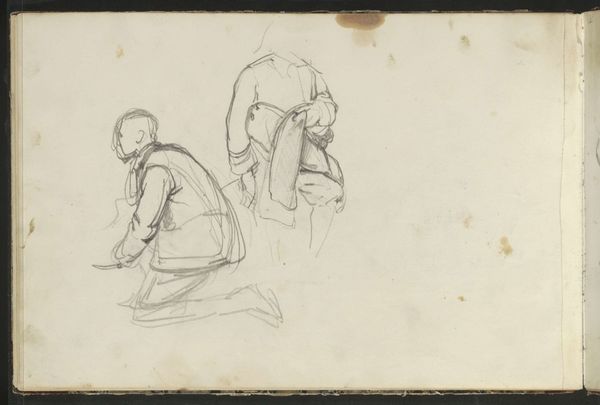
drawing, pencil
#
portrait
#
drawing
#
figuration
#
intimism
#
pencil
#
expressionism
#
genre-painting
Copyright: Public Domain: Artvee
Curator: Looking at James Ensor’s pencil drawing, “Two Women and a Theologist”, I immediately notice the stark contrast between the almost frantic energy of the figures above and the grounded stillness of the figure below. Editor: Yes, it feels like a glimpse into the artist's mind—different ideas or perhaps memories coexisting on a single page. I’m struck by how the hurried quality of the pencil strokes gives the piece a very raw, almost unfinished feel. You can see the labor. Curator: Absolutely. Consider that this placement likely references societal power structures. The women dance, embodying freedom. Their elevated positioning can be seen as a challenge to the rigid, patriarchal figure, symbolizing resistance against religious or moral constraints. The male figure anchors them down with traditional power and knowledge. Editor: I see it too. The weight of that seated figure in the lower portion, so densely rendered in pencil, provides an anchor—a sense of gravity literally grounding the more ethereal scene above. The contrast in technique makes each grouping distinct. Curator: And let’s remember that Ensor, working at the turn of the century, was part of a generation grappling with shifting social mores. The very depiction of women in such liberated poses challenges bourgeois norms, making a potent statement about female agency and sexuality. Ensor also challenges class and societal power. Editor: It makes me consider how the materials themselves play into this tension. Pencil, a relatively accessible medium, allows for this immediate expression. The marks are laid bare. Is the apparent ‘unfinished’ nature of it adding to its subversive attitude? A finished oil painting would lend more credence. Curator: That’s astute, the roughness really amplifies the sense of immediacy and perhaps the provisional nature of freedom itself. Ensor's ability to capture such nuanced themes within a single drawing is a powerful commentary on the sociopolitical climate of his time. Editor: Exactly. And thinking about it in terms of material agency really underlines that connection for me. Seeing the process, the deliberate rawness of the marks, elevates it. It adds another dimension of meaning to those contrasts you pointed out. Curator: So, while seeming to be simply a sketch, the composition encourages us to reflect on societal control and freedom and perhaps Ensor's perspective on them both. Editor: Indeed. It’s not just an image; it's an encounter with materiality, production, labor, and historical contexts, and as a result, feels really vital, even now.
Comments
No comments
Be the first to comment and join the conversation on the ultimate creative platform.
